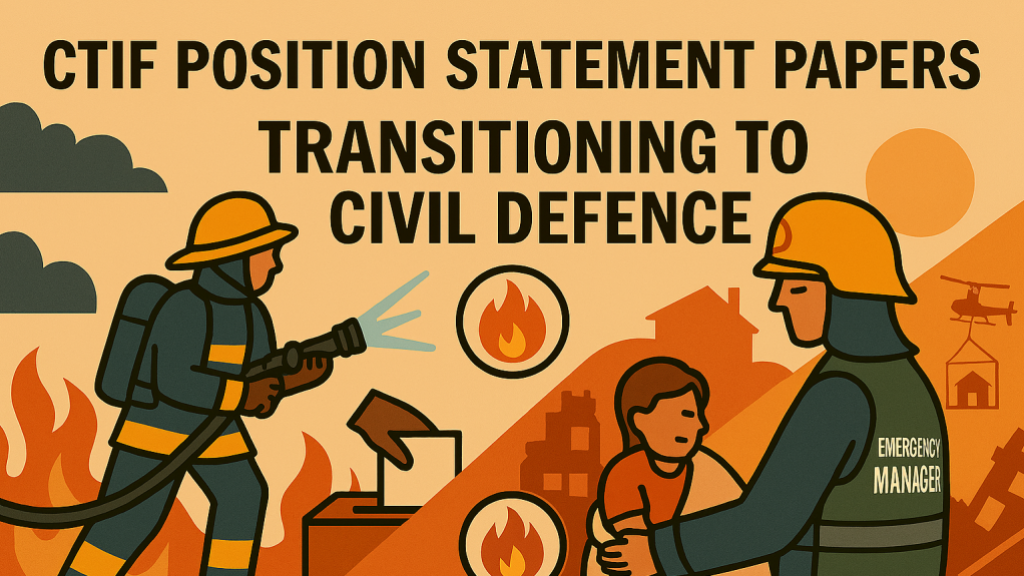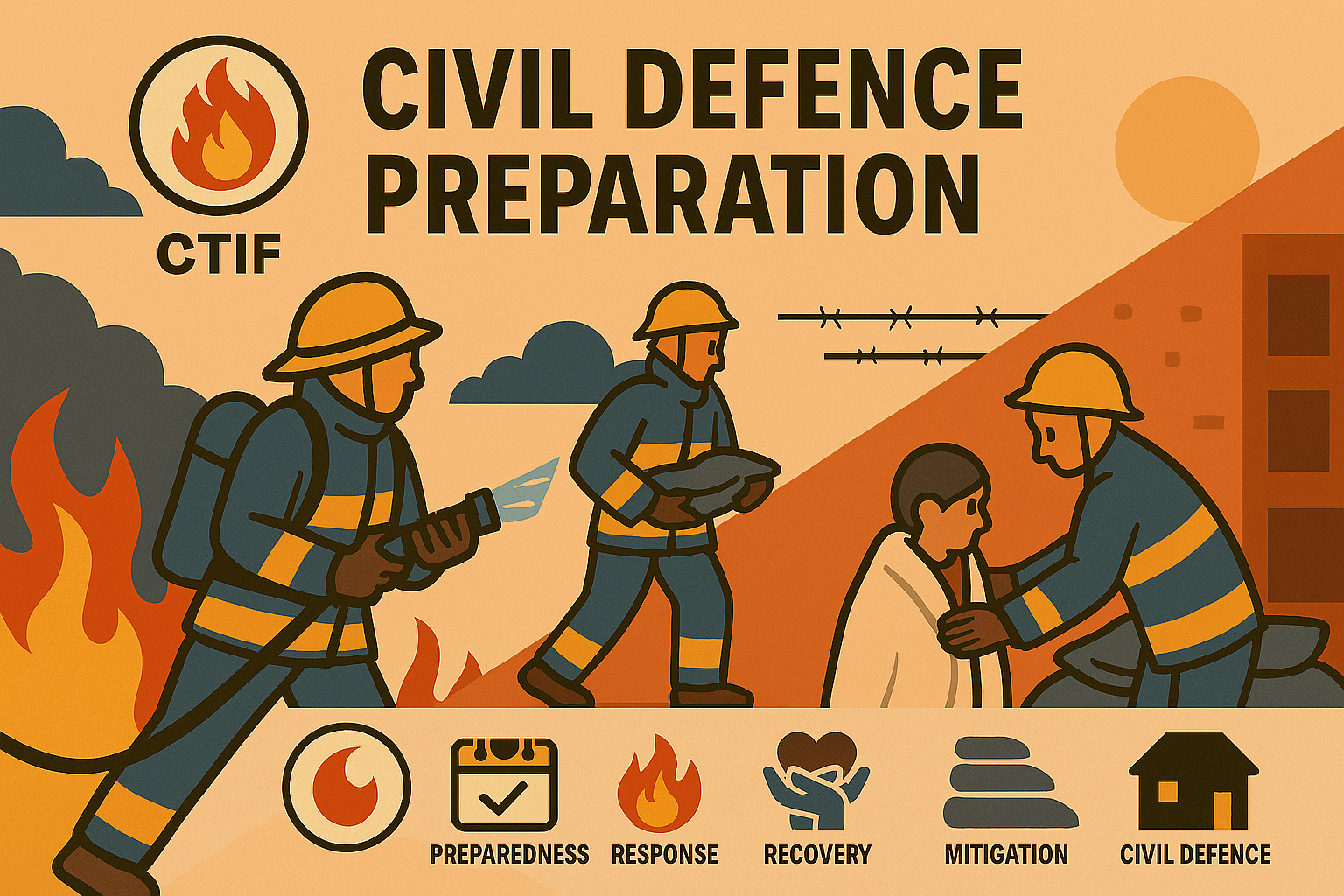
CTIF Position Statement Papers on the transition to Civil Defence and EC proposal to form a new international CTIF Commission
Thank you for choosing Automatic Translation. Currently we are offering translations from English into French and German, with more translation languages to be added in the near future. Please be aware that these translations are generated by a third party AI software service. While we have found that the translations are mostly correct, they may not be perfect in every case. To ensure the information you read is correct, please refer to the original article in English. If you find an error in a translation which you would like to bring to our attention, it would help us greatly if you let us know. We can correct any text or section, once we are aware of it. Please do not hesitate to contact our webmaster to let us know of any translation errors.
Dear CTIF Members, 
Please find attached the white papers “Advancing Civil Defence in Fire and Rescue Services” and the accompanying Position Statement “Transitioning to Civil Defence.”
These papers reflect CTIF’s growing commitment to strengthening the civil defence capacities of fire and rescue services in light of evolving geopolitical and security challenges.
The CTIF Executive Committee proposes to establish a new CTIF Commission on Civil Defence, which will serve as a platform for strategic coordination, policy development, and international collaboration among member countries.
We invite all CTIF members wishing to actively contribute to this initiative to inform the CTIF Secretariat (contact@ctif.org) by 31 December 2025.
Your engagement will be essential in shaping this collective effort to reinforce the resilience and readiness of our fire and rescue services.
Kind regards,
Neza Strmole, CTIF Office
Summaries of the papers attached can be found below:
1. Advancing Civil Defence in Fire and Rescue Services (October 2025)
- Context: CTIF highlights recent incursions into sovereign nations (Ukraine, Poland, Qatar, Estonia) as evidence that fire and rescue services must adapt to civil defence roles.
- Problem: Current emergency systems show vulnerabilities in armed conflict, infrastructure collapse, displacement, and coordinated threats.
- Proposal: Establish a new CTIF Commission on Civil Defence to coordinate strategy, policy, and international collaboration.
- Objectives of the Commission:
- Share best practices in civil defence operations.
- Assess capabilities and gaps in preparedness, response, and recovery.
- Develop a flexible, scalable framework adaptable to different national contexts.
- Promote cross-border interoperability and resilience.
- Call to Action: Member nations are invited to join the initiative by December 31, 2025.
2. Transitioning to Civil Defence – CTIF Position Statement (September 2025)
- Position: CTIF condemns armed conflict, supports the Geneva Convention, and stresses the protection of civilian protective services.
- Key Question: Should fire services evolve from a civil protection focus (preparedness, resilience, recovery) to a civil defence approach (operating in armed conflict)?
-
Challenges Identified:
- Wide variation in national fire service structures (volunteer vs. career, local vs. national).
- High investment needed to realign policy, resources, and training.
- Political sensitivities and sovereignty issues.
- International Frameworks:
- Geneva Convention Protocol I defines civil defence tasks (rescue, firefighting, medical aid, decontamination, etc.).
- EU initiatives (Preparedness Union Strategy, Civil Protection Mechanism) and NATO resilience commitments are reshaping expectations.
- Civil Protection vs. Civil Defence:
- Civil protection = response to disasters, climate events, technical failures.
- Civil defence = response to armed aggression, requiring closer civil-military coordination.
- Emerging Threats: Climate change, geopolitical instability, terrorism, cyber-attacks, and new weaponry.
- Lessons from History: WWII, the Cold War, post-9/11 reforms, and current conflicts (Ukraine, Israel-Palestine) show the need for integrated civil defence planning.
- Examples: Sweden’s “Total Defence” model integrates civilian and military preparedness, with conscription and regional civil defence structures.
- Next Steps: CTIF suggests a pathway including legal clarification, risk profiling, identifying vulnerabilities, developing protocols, and exercising new strategies.
Overall Takeaway
Both papers argue that fire and rescue services must evolve beyond traditional disaster response into a broader civil defence role.
CTIF is positioning itself to lead this shift by creating a dedicated Commission, promoting international cooperation, and encouraging members to prepare for scenarios involving armed conflict, infrastructure collapse, and hybrid threats.
Illustration: From an idea by Bjorn Ulfsson / CTIF, executed by MS CoPilot
